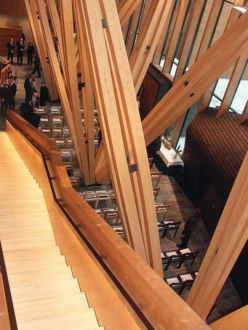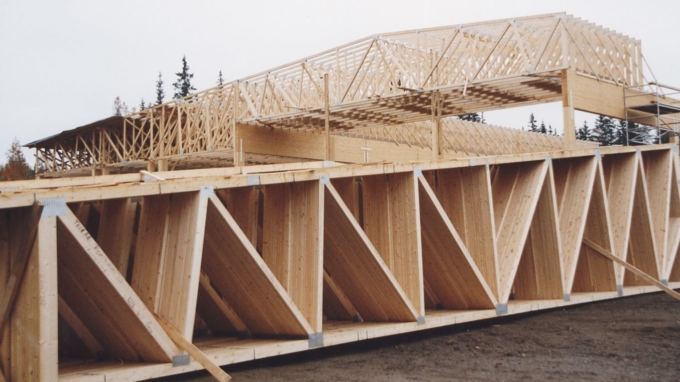Glulam
Glulam beams are manufactured by gluing together pre-graded and especially in multi layered beams finger jointed lamellas.
Glulam by definition consists of minimum two, maximum 45mm thick lamellas, but in Duo and Trio (2 and 3 lamellas) beams the lamellas can also be thicker. Glulam beams have to meet preset standards as per SFS-EN 14080 and they must be produced according to SFS-EN 386 standard.
Lamellas are made of strength graded timber, which may also have finger joints. Lamellas are planed before gluing and planing. Readymade beams are also planed all round.
Maximum height for glulam is about 2 meters and maximum length 30 meters. Socalled stock beams, which are sold by distributors, tend to be 12 meters long. Lamella thicknesses are usually 45mm for straight beams and 33mm for curved beams.
Glulam beams are used for industrial and agricultural buildings, supermarkets, sports halls and stadiums, and schools.
I Beams and other applications
I Beams are an OSB, plywood or hardboard central section (web) supported by wooden or LVL flanges, which have been glued at the bottom and top.
I Beam’s have been designed to be used in structural applications like floor and wall joists.
With I beams, one can achieve the same support strength with a smaller material volume than with sawn timber or glulam.
Roof trusses are structural applications as well. There the structure is based on the use of nail plates binding strength graded and regularised pieces of timber together. Truss properties are determined in the standard SFS-EN 14250.



